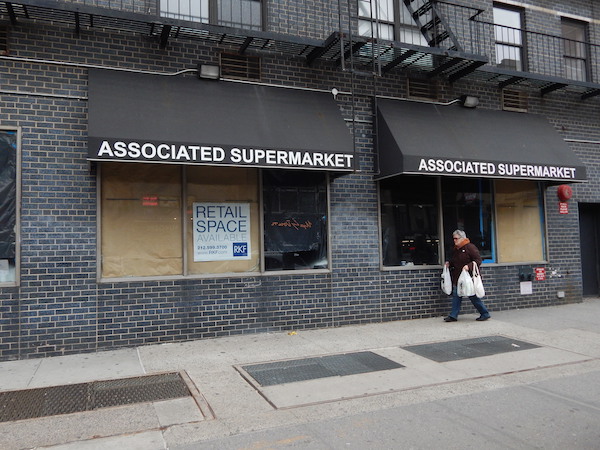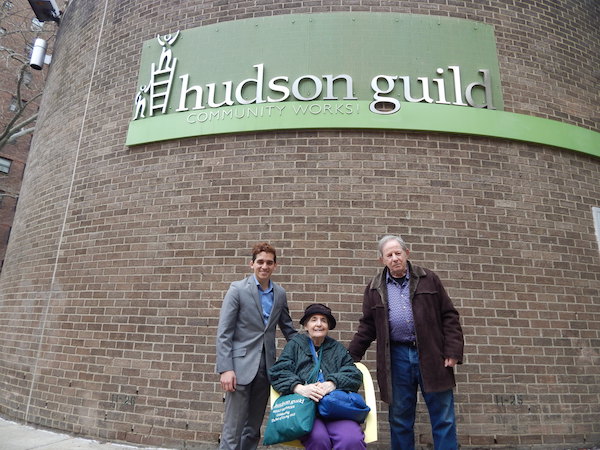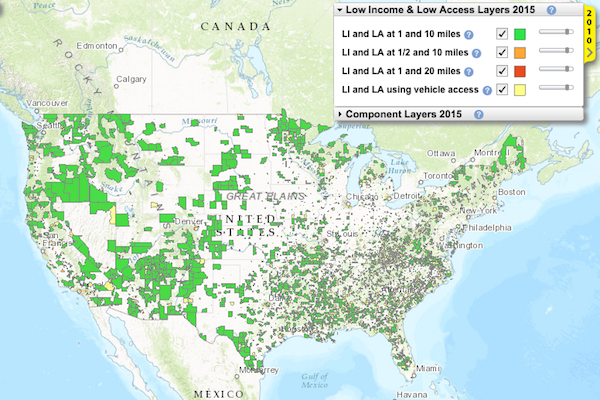
BY SEAN EGAN | With skyrocketing rents, last year’s closure of the Associated supermarket on W. 14th St., and the stalling of the Small Business Jobs Survival Act in City Council, the struggle to find affordable, quality groceries in Chelsea has become greater than ever before. For many facing the dual challenge of limited finances and mobility, the situation can often feel as if it’s insurmountable. However, not all hope is lost: A new task force of the Hudson Guild Neighborhood Advisory Committee (NAC), armed with grassroots passion, is setting its sights on fixing this pressing issue.
Spearheaded by Italo Medelius, a NAC Community Access Committee member, the task force was officially approved by the Hudson Guild NAC mid-March, but had been working on the grocery issue since January. Currently, its ranks consist of Medelius, Larry Littman, Merle Levin, and Alix Birdoff (Assistant Director of Mental Health Services at Hudson Guild; 459 W. 26th St., btw. Ninth & 10th Aves.; hudsonguild.org).
“There were a lot of different community members that were focusing on issues like dogs and rats and potholes, things like that,” Medelius explained of the task force’s early goings. “We decided that we were going to work on three topics: Grocery affordability, restaurant affordability, and police relations. Initially we were going to tackle all three at the same time, but then as soon as we started diving into this whole supermarket thing, and grocery affordability, we decided this was an enormous issue that nobody was really shining a light on in the community.”
The task force has hit the ground running with new short- and long-term efforts to help turn the grocery situation around for Chelsea. As reported in Chelsea Now last month (March 8; “Mission Affordable: Survey a Start for Better Grocery Shopping Options”), just before the task force’s official formation, the group circulated a survey to gather information about Chelsea’s grocery-buying landscape. The survey was posted online (still accessible for participation at goo.gl/vCd6YR), and physically at a number of community locations, and Medelius said that they are continuing outreach to community leaders and local businesses to get it out to the public.
Thus far, with approximately 50 respondents, the survey has revealed unsurprising, if concerning, results. Sixty percent of those polled reported that they used more than one grocery option in their shopping, and a further third of survey takers reported that they do not shop at area Chelsea supermarkets — instead opting to travel far and wide for cheaper options, like the Park Slope Food Coop (foodcoop.com) or the Walmart in New Jersey. Even factoring in bus costs, “It’s a lot cheaper than just shopping at the Gristedes at home,” Medelius noted. Additionally, 80 percent reported that affordable options and high-quality food — or the lack thereof — is a high-priority issue to them.
Since these statistics were tabulated, however, Medelius’ team has translated the survey into Spanish (Mandarin forthcoming), and is focusing on getting the survey to residents of Penn South and the Elliott-Chelsea Houses — “We want to make it so that everybody in the community can have a say.” He hopes gathering even more accurate information that will come in handy for their next short-term project.

“We decided that we were going to take on a project to illustrate our living in a food desert for seniors and disabled,” Medelius explained to Chelsea Now via email after an April 4 task force meeting. “We’re going to build a map with grocery stores marked on them and show walking distance as for seniors and disabled. We would also color code affordability of supermarkets and those who accept WIC and SNAP for deliveries,” he went on, noting that no major chain supermarkets fit those criteria, and that the west side of Chelsea is a particular problem area in this regard.
The hope is that the map will be able to be used as a handy graphic at a forthcoming town hall meeting — which Medelius hopes to be set up in the next month or so, in order to bring the community at large into their efforts. And, as mentioned, Medelius thinks that the map could help aid in the case in trying to designate the area a food desert — one of their primary long-term goals.
The USDA is the government agency that keeps track of food deserts — neighborhoods that lack healthy food sources. One metric by which they determine food deserts is whether an area is “low access,” defined as “if at least 100 households are more than a half-mile from the nearest supermarket and have no access to a vehicle; or at least 500 people or 33 percent of the population live more than 20 miles from the nearest supermarket.” Medelius believes that Chelsea qualifies as a food desert for its senior population, and is looking to present research to the agency to try to get it classified as such.
“Chelsea has become kind of a food desert for seniors and disabled. They can’t get fresh produce; they can’t get affordable food,” noted Medelius. “We realize that Chelsea is very, very specific and very different than other food deserts, because it’s just a food desert for a specific population,” he went on. “If we have it classified as a food desert, it’s going to get a little bit more attention than it is now… maybe a little bit more manpower to get this movement going.”
Another longer-term attention-getting endeavor Medelius advocates is using a bus service to bring locals to New Jersey en masse to shop for cheaper groceries. “Because the bus service to New Jersey is going be more of a political statement, or a statement to be able to get a little more attention, somebody bounced around the idea that we could actually have a rally at a Gristedes, and from there put everybody on a bus and head over to New Jersey,” Medelius elaborated.
Further future, on-the-grounds efforts include the hopeful founding of a volunteer crew that will help deliver groceries to WIC and SNAP recipients regularly. Medelius also revealed another “very, very long term thing,” that the task force has been percolating: “We’re in talks right now with Park Slope Food Coop, and we’re going to take a tour with them; they’re going to come speak to our organization and we’re going to see if we can maybe start setting up a food co-op in Chelsea.”

Overall Medelius has high hopes for the task force, the awareness they will raise, and the grassroots work they’ll do — and with the progress they’ve made in their short time together, there’s reason for the community to have high hopes.
“We’re trying to give these people a voice and try to advocate for them as best as we can,” explained Medelius. “We’re only a three-month-old group, but I think we’re making a lot of great strides. So I’m excited to see where it goes.”

















